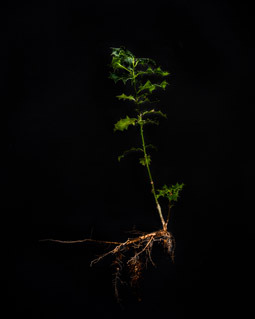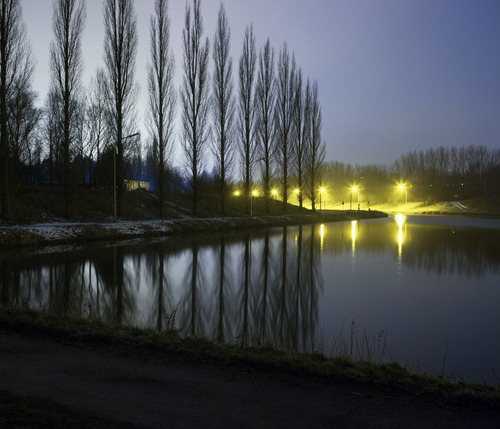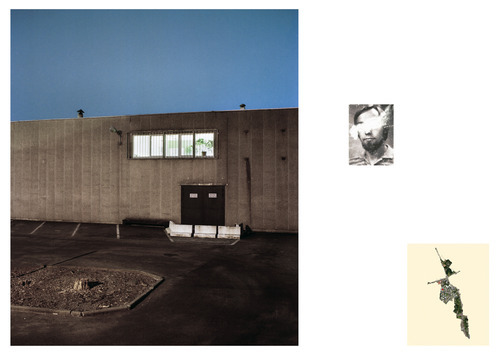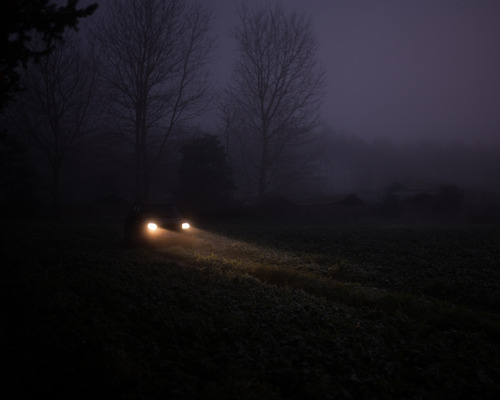Tell us about your approach to photography. How it all started? What are your memories of your first shots?
Jan Rosseel (JR): My first serious attempt in pursuing photography was when I was doing research on rural-urban migration flows in China. At that time I was studying Chinese Culture and Language at Leiden University. During an exchange year at a Shandong University in Jinan, China I decided that it was more beneficial to get closer to the subject I was researching. My first shots were portraits of migrant workers, a group of young workers I followed for some time. I always had an interest in photography and this was the perfect tool to submerge myself in a topic. So I picked up a camera and bought all the film I could afford and started shooting. All the films were developed in my bathroom. It was then that I decided that photography was a good way to tell stories and reach a wider audience. Upon my return I enrolled at the Royal Academy of Arts in The Hague (Kabk) and got accepted.

© Jan Rosseel, ‘Belgian Autumn. A Confabulated Story’
How did your research evolve with respect to those early days?
JR: During my education at the Royal Academy I learned to think more conceptually. In the beginning my work was a lot more grounded in the tradition of photojournalism. The first two years at the Art Academy I was still looking for a way to express myself in a way that suited me. It was not until the last two years of my education that I started experimenting with storytelling ideas and techniques. The first test was at a summer school program with Jodie Bieber where I first discovered a good way to mix fact and fiction in a photo essay. For me it was an important starting point to create a photographic language that gave me enough room to experiment at at the same time stay true to the story.
Tell us about your educational path. What are your best memories of your studies? What was your relationship with photography at that time?
JR: I had a bit of an odd educational path I suppose. I started my education at Hotelschool ‘Ter Duinen’ in Koksijde. After working in various fine dining restaurants around the world for almost ten years I decided to study Chinese Language and Culture at Leiden University. After an exchange year in China I enrolled at the Royal Academy of Arts (Kabk) in The Hague. After the second year at the Academy I did an exchange program at the Danish School of Media and Journalism and finally graduated in 2013 from the Kabk. I guess there has always been a visual element in my education at some point, from cooking to photography.

© Jan Rosseel, 'Belgian Autumn. A Confabulated Story’
What were the courses that you were passionate about and which remain meaningful to you?
JR: It is hard to pinpoint a specific course. At the Kabk I enjoyed mostly courses that challenged the way we perceive the world and also the way we can build our visual literacy. I suppose most of these courses are meant to think about concept and context, rather than aesthetics. Seeing the process as an important part of the work, and not only the final outcome. At times the process and experiment were more important than the result.
At the Danish School of Media and Journalism I was really enthusiastic about the multimedia course by the Bombay Flying club. It was a new way of storytelling that really opened my eyes to the possibilities to create stories in a new way and to mix different kinds of media.
Any professor or teacher that allowed you to better understand your work?
JR: I think that all my teachers have played a role in creating a better understanding of my work. But more importantly I have always looked outside my education to get more insights. Not only did I look for other photographers to talk about ideas but also people with a background in science or philosophy for example. At the Kabk I think that Corinne Noordenbos, the head of the photography department has played a significant role, not only in my own education but also in the philosophy of the photography department. At times it was hard to keep questioning your work over and over again but by slowly getting to the essence of the work it would become a lot stronger.


© Jan Rosseel, 'Belgian Autumn. A Confabulated Story’
What do you think about photography in the era of digital and social networking?
JR: Despite of all the bad news and people claiming the end of photography and photojournalism I think that we live in a very exciting time. The possibilities to get your story out have grown significantly. The digital era has a lot of benefits and it has created a lot of new opportunities for photographers to get their work published and shared with a large audience. One of the most significant changes for me are the possibilities of publishing photo books in a way that was very difficult ten years ago. Nowadays any photographer can publish a photo book and directly showcase it to people who are interested in small edition or handmade photo books. My first book was a self published book and thanks to social networking it was sold out in two days.
How would you describe your personal research in general?
JR: In general my work is about 90% research, both theoretically and visually. I suppose I am quite classical in the way I do research. I try to gather and collect as much information as possible. From there I start to create a framework that allows me to visualise the research. In visualising the research, the role of interpretation becomes more present.


© Jan Rosseel, 'Belgian Autumn. A Confabulated Story’
Do you have any preferences in terms of cameras and format?
JR: I generally shoot on various formats at the same time. Especially when I am still in the research phase. Sometimes a specific format gives you the control you need or forces you to be more considerate about your framing. When I am on an assignment with a really tight deadline I shoot digitally otherwise I still shoot film or polaroid, which I prefer.
I love working with my 4x5 large format as it yields a big negative and gives me a sense of concentration. Furthermore I shoot anything from Mamiya 7 to Rolleiflex 6x6 and Holga cameras. I use different formats because each camera forces me to rethink a specific topic again. Actually it is not that important which camera you use, as long as it works for you.
Tell us about your latest project Belgian Autumn. A confabulated History.
JR: The project Belgian Autumn. A confabulated History. is a story about the ‘Brabant Killers’ or the ‘Bende van Nijvel / Tueurs du Brabant Wallon’ as they are called in Belgium. It is a story about a gang of unknown criminals that killed twenty eight people during supermarket raids in Belgium between 1983 and 1985. The story is a visual research into one of Belgium’s greatest enigmas. The project is based on the collective memories and borrowed memories from eye witness accounts, police reports and newspaper clippings.
Is there any contemporary artist that influenced you in some way?
JR: There are a lot of artists that I think are really good, from a wide variety of art forms. Architects Rem Koolhaas and Zaha Hadid. Painters Zhang Xiaogang, Michael Borremans and Francis Bacon. And I am an admirer of the seeming simplicity of Anish Kapoor.
One of the most influential visual artists to me has always been Italian filmmaker Bernardo Bertolucci. Not only is there a lot of depth in his stories, he is also an exquisite aesthetician.
Photographers I would say Rafal Milach as he is also a great photo book maker, Dirk Braeckman for his wonderful printing technique and Taryn Simon for her zealous research and exquisite presentation.
Three books of photography that you recommend?
JR: ’Tranquility’ by Heikki Kaski. 'Ponte City’ by Michael Subotzky. 'In the car with R’ by Rafal Milach.
Is there any show that you’ve recently seen that you find inspiring?
JR: There is one show that comes up straight away, even though it is not that recent. The exhibition by Sarah Moon at the Botanique in Brussels. There are not that many exhibitions that are the perfect harmony between space and subject matter but the exhibition by Sarah Moon was mind blowing.
The exhibitions ‘Ponte City’ by Michael Subotzky at FoMu in Antwerp. The exhibition ‘Love Radio’ by Anouk Steketee at Foam in Amsterdam. Both of these exhibitions were not only well researched projects but also well balanced presentations that made good use of the space. I guess I am always interested in an exhibition that reacts to the space where it is presented.
Projects that you are working on now and plans for the future?
JR: I am currently working on a new version of the book Belgian Autumn. A confabulated History. If all goes well it should be ready in spring 2015. Furthermore I have a few exhibitions planned for 2015 in Tokyo, Rome and Antwerp and also teaching workshops about photo book making in Rome and in Tokyo in spring.
At the same time I am doing research on a new project evolving around the notion of memory and historical events.

© Jan Rosseel, 'Belgian Autumn. A Confabulated Story’
How do you see the future of photography in general evolve?
JR: The future of photography looks quite promising. I think that there will be a shift in the way people use photography for storytelling purposes in a new and refreshing way. The possibilities are almost endless with the use of various techniques. We will probably see more interactive ways of dealing with photography. The use of video is also increasing as cameras that produce high end images become more affordable. I do not see this as a threat to the industry but rather a way for people with smaller budgets but a lot of creativity to experiment and get their work out. There is surely an overabundance of images already but seeing new and interesting work is worth the visual overdose.
---
LINKS
Jan Rosseel
Belgium
share this page
